Automate model building with AutoAI¶
For this part of the workshop, we'll learn how to use AutoAI. AutoAI is a capability that automates various tasks to ease the workflow for data scientists that are creating machine learning models. It automates steps such as preparing your data for modeling, chooses the best algorithm/estimator for your problem, experiments with pipelines and parameters for the trained models.
This section is broken up into the following steps:
Note: The lab instructions below assume you have a project already with the assets necessary to build a model. If not, follow the instructions in the pre-work section to create a project.
1. Run AutoAI Experiment¶
- Go the (☰) navigation menu and click on the Projects link and then click on your analytics project.

- To start the AutoAI experiment, click the
Add to Projectbutton from the top of the page and select theAutoAI experimentoption.
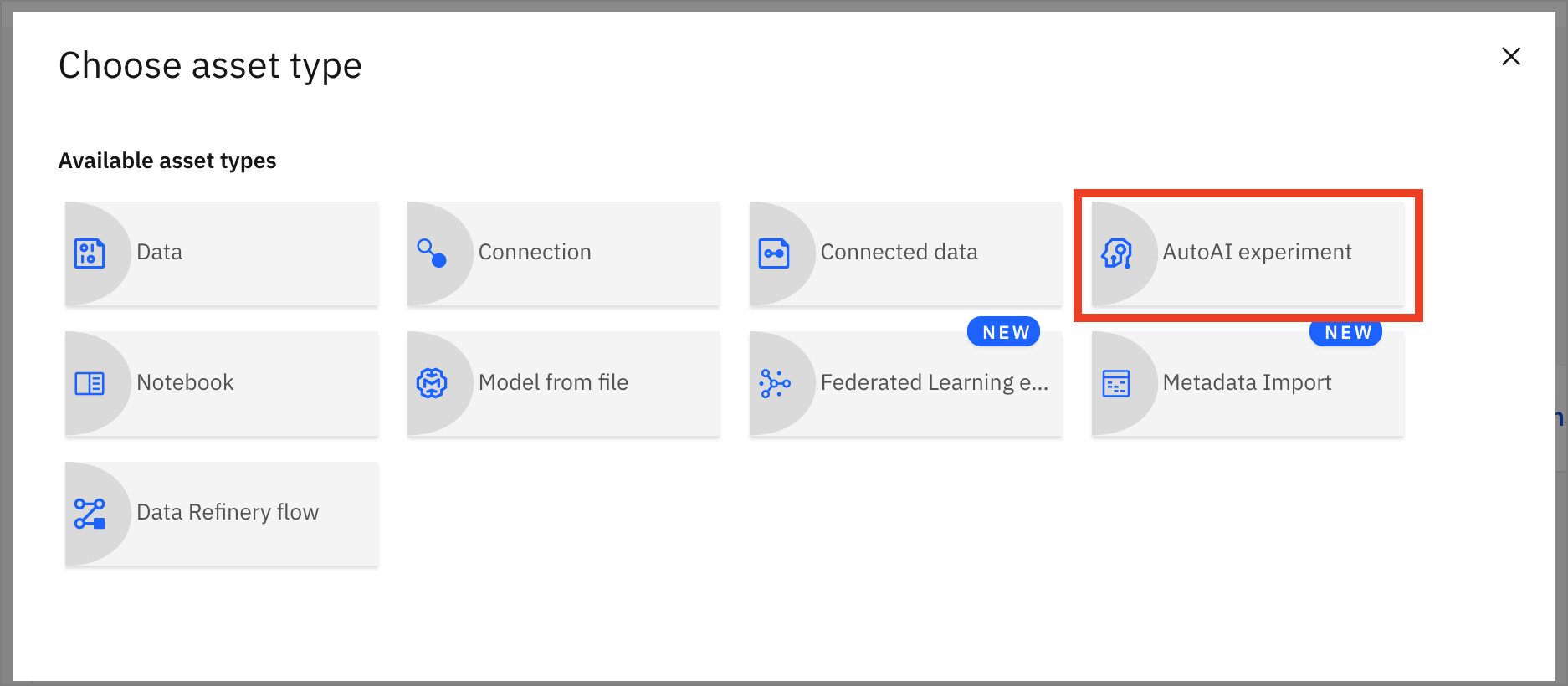
- Name your AutoAI experiment asset and leave the default compute configuration option listed in the drop-down menu. Then click the
Createbutton.
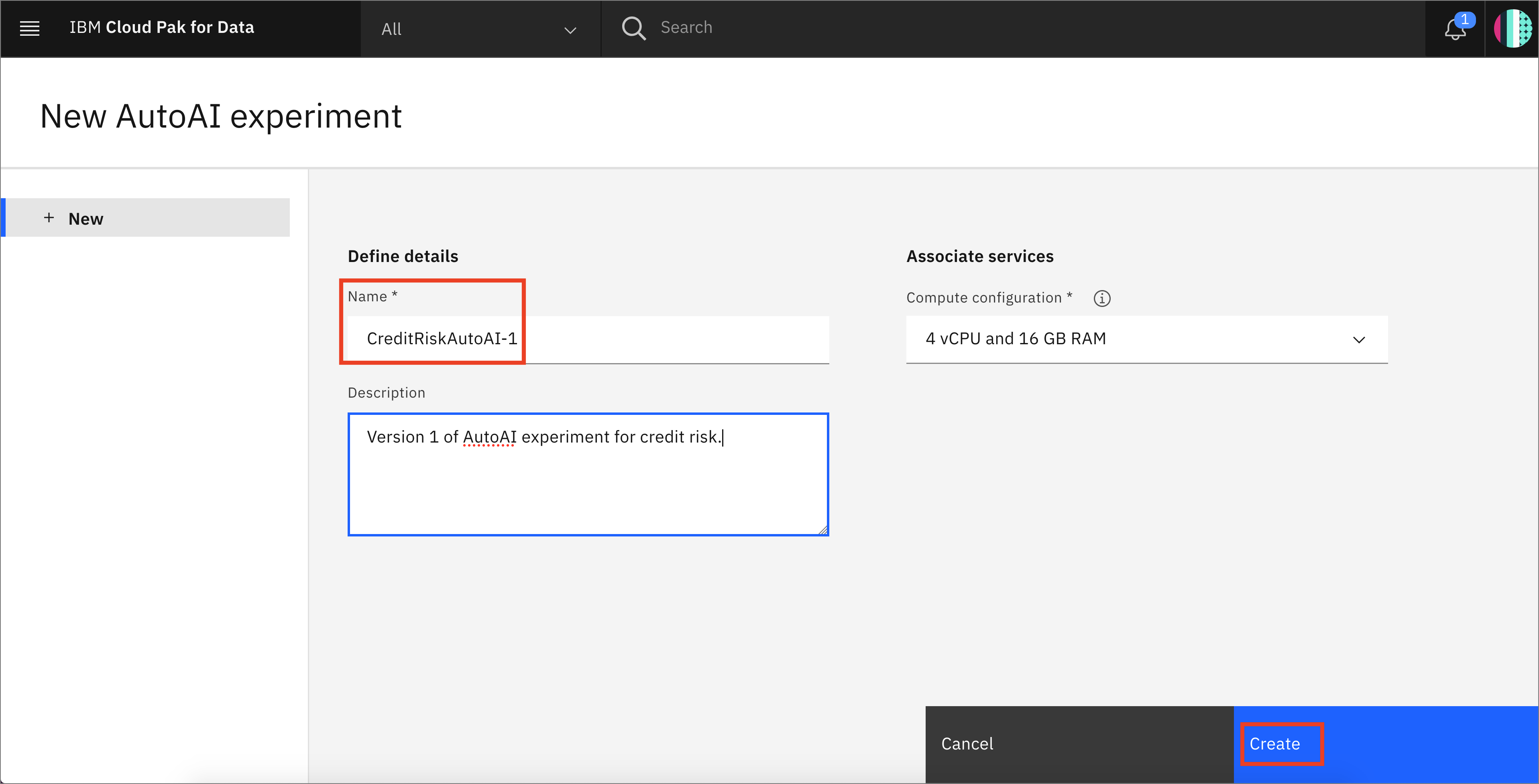
- To configure the experiment, we must first give it the dataset that will be used to train the machine learning model. We will be using one of the CSV file datasets we have preloaded into the project. Click on the
Select from projectoption.
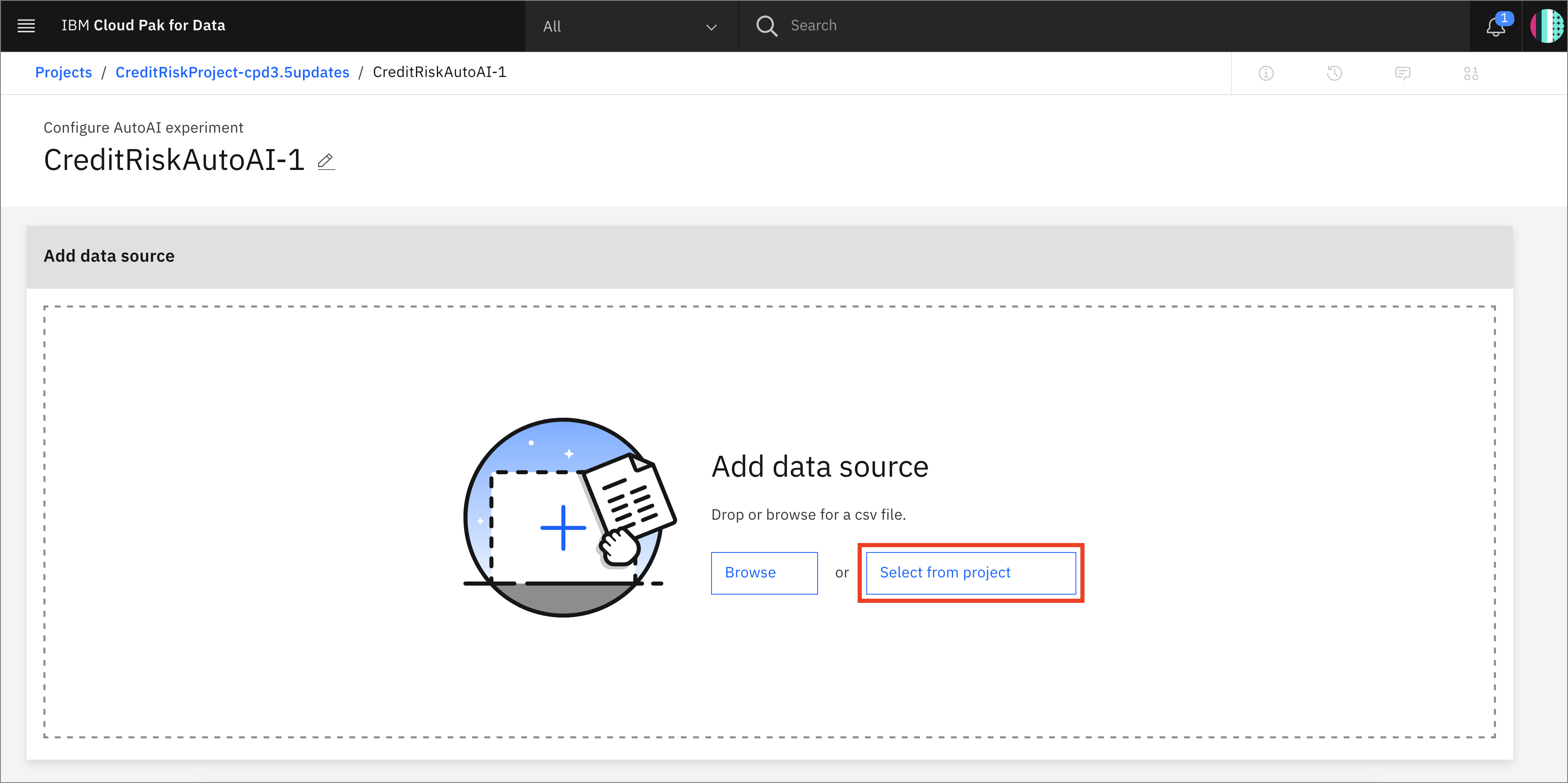
- In the dialog, select the
german_credit_data.csvfile and click theSelect assetbutton.

-
Once the dataset is read in, we will need to indicate what we want the model to predict. Under Select prediction column panel, find and click on the
Riskrow. -
AutoAI will set up defaults values for the experiment based on the dataset and the column selected for the prediction. This includes the type of model to build, the metrics to optimize against, the test/train split, etc. To view/change these values, click the
Experiment settingsbutton.

- On the
Data source settingspanel, in theSelect columns to includesection, deselect the checkbox for theCustomerIDcolumn name. This will remove the customer ID column from being used as a feature for the model. Although we could change other aspects of the experiment, we will accept the remaining default values and click theSave settingsbutton.
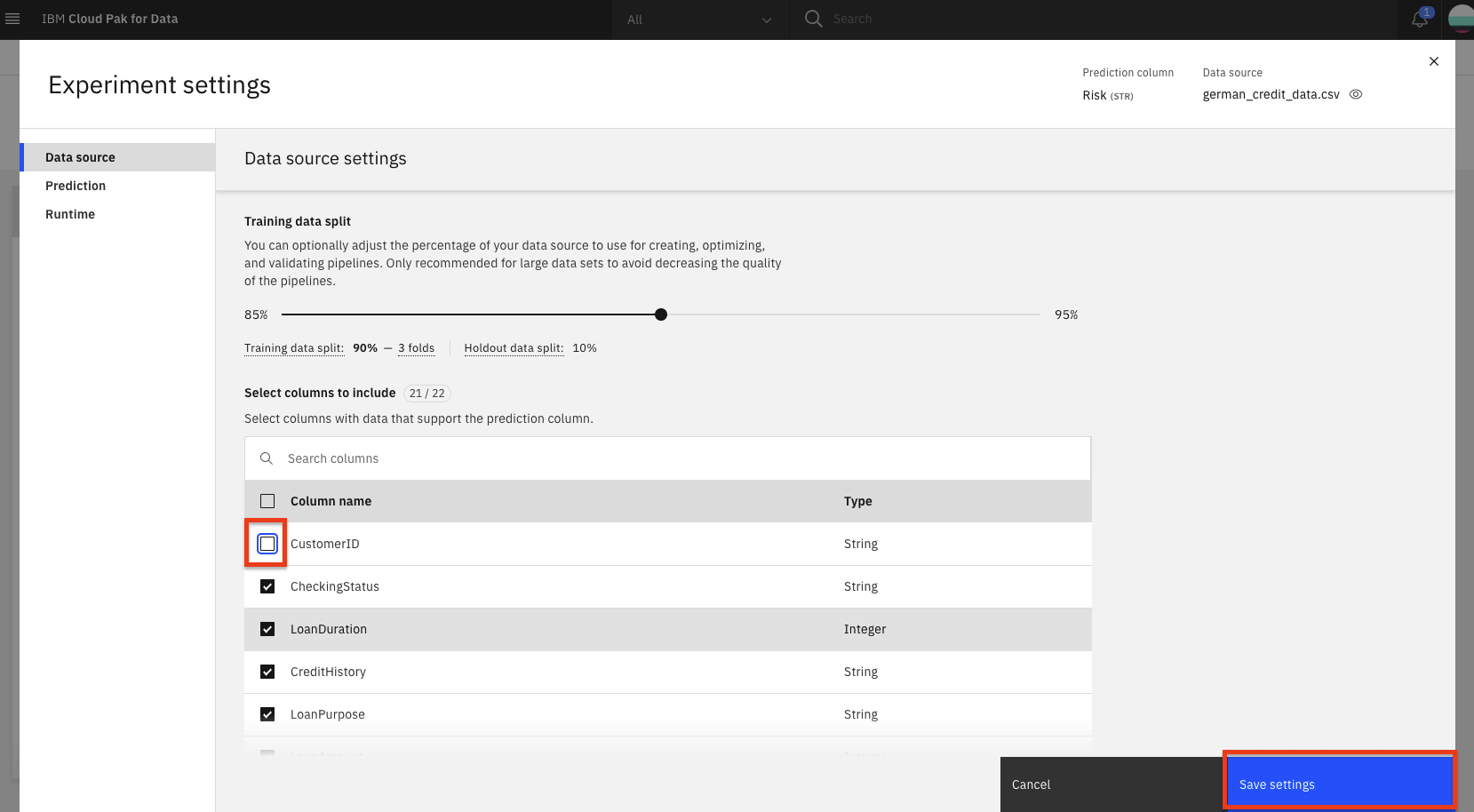
- To start the experiment, click on the
Run experimentbutton.
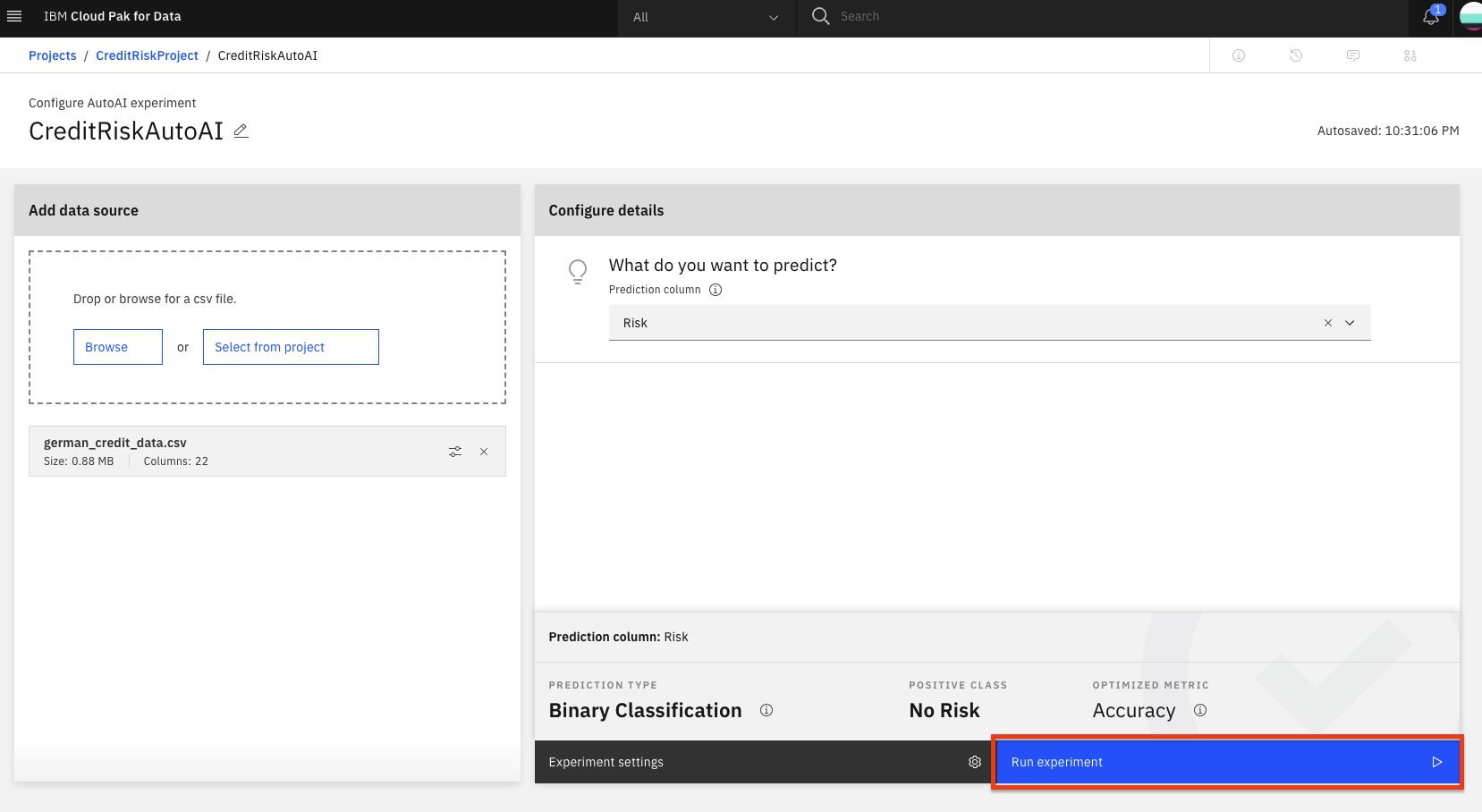
-
The AutoAI experiment will now run. AutoAI will run through steps to prepare the dataset, split the dataset into training / evaluation groups and then find the best performing algorithms / estimators for the type of model. It will then build the following series of candidate pipelines for each of the top N performing algorithms (where N is a number chosen in the configuration which defaults to 2):
-
Baseline model (Pipeline 1)
- Hyperparameter optimization (Pipeline 2)
- Automated feature engineering (Pipeline 3)
-
Hyperparameter optimization on top of engineered features(Pipeline 4)
-
The UI will show progress as different algorithms/evaluators are selected and as different pipelines are created & evaluated. You can view the performance of the pipelines that have completed by expanding each pipeline section in the leaderboard.
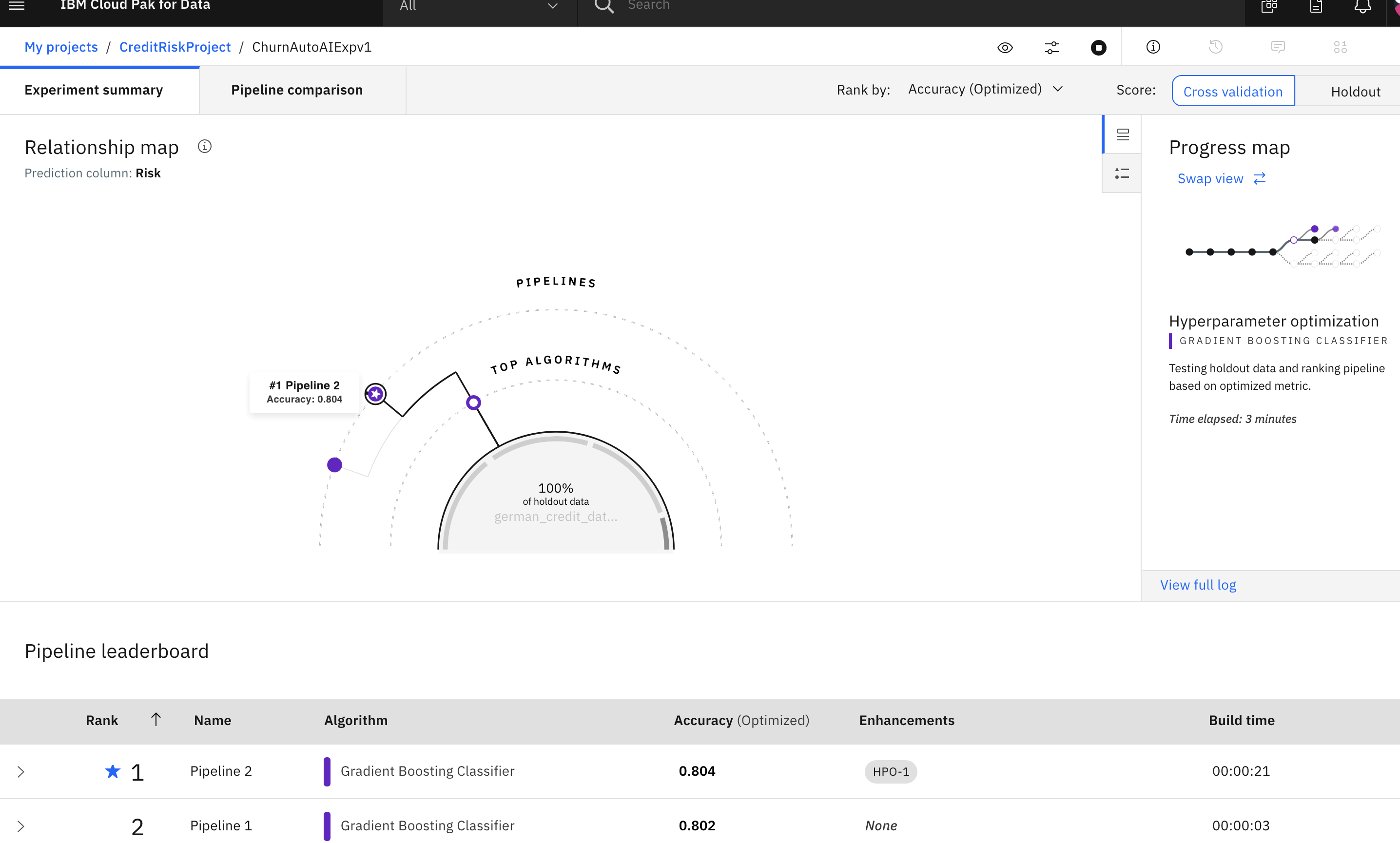
- The experiment can take several minutes to run. Upon completion you will see a message that the pipelines have been created. Do not proceed to the next section until the experiment completes.
2. Save AutoAI Model¶
- Once the experiment completes, you can explore the various pipelines and options in the UI. Some of the options available are to see a comparison of the pipelines, to change the ranking based on a different performance metric, to see a log of the experiment, or to see the ranked listing of the pipelines (ranking based on the optimization metric in your experiment, in this case accuracy.)
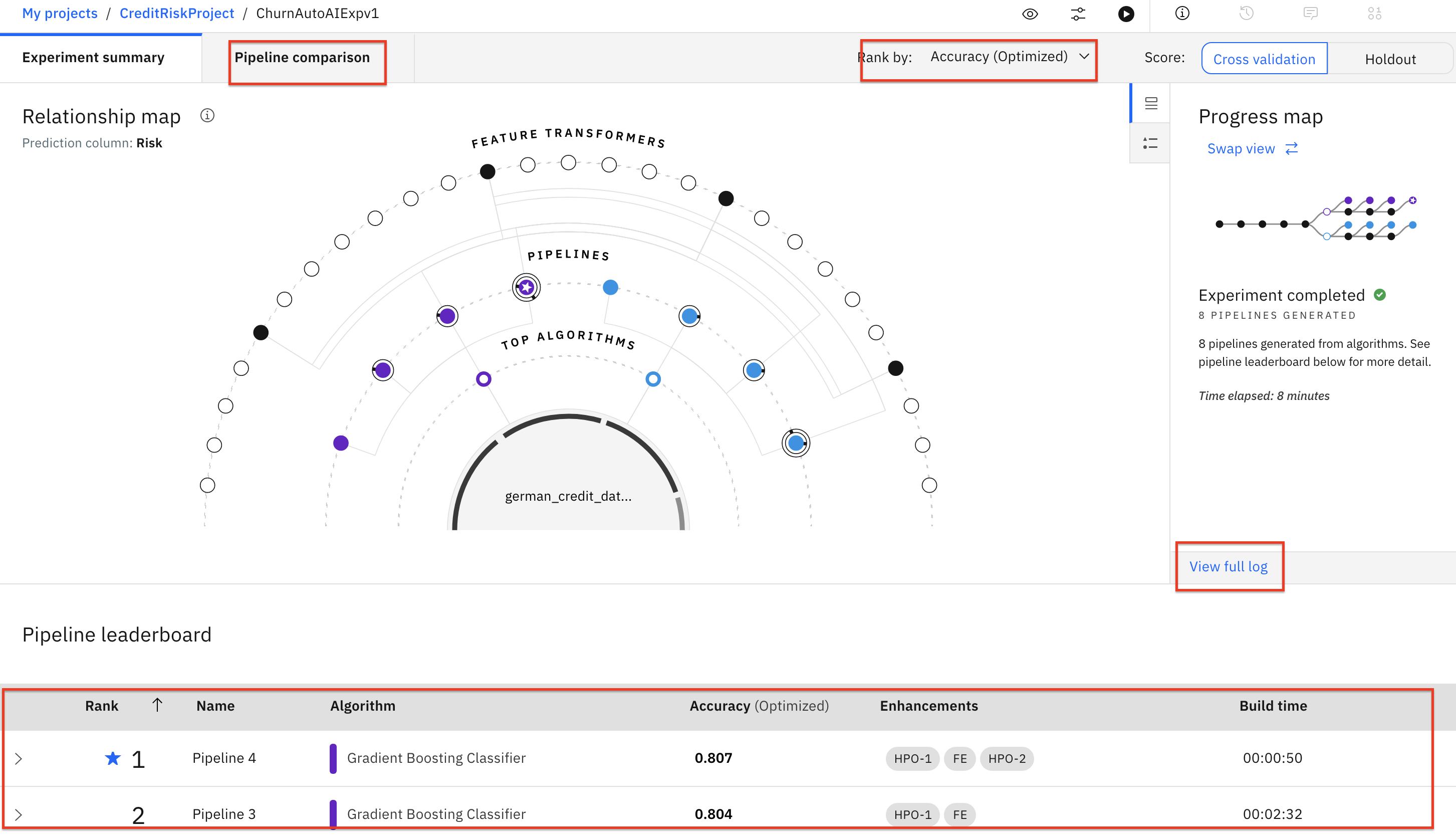
-
Scroll down to see the Pipeline leaderboard. The top performing pipeline is in the first rank.
-
The next step is to select the model that gives the best result and view its performance. In this case, Pipeline 4 gave the best result for our experiment. You can view the detailed results by clicking the corresponding pipeline name from the leaderboard:
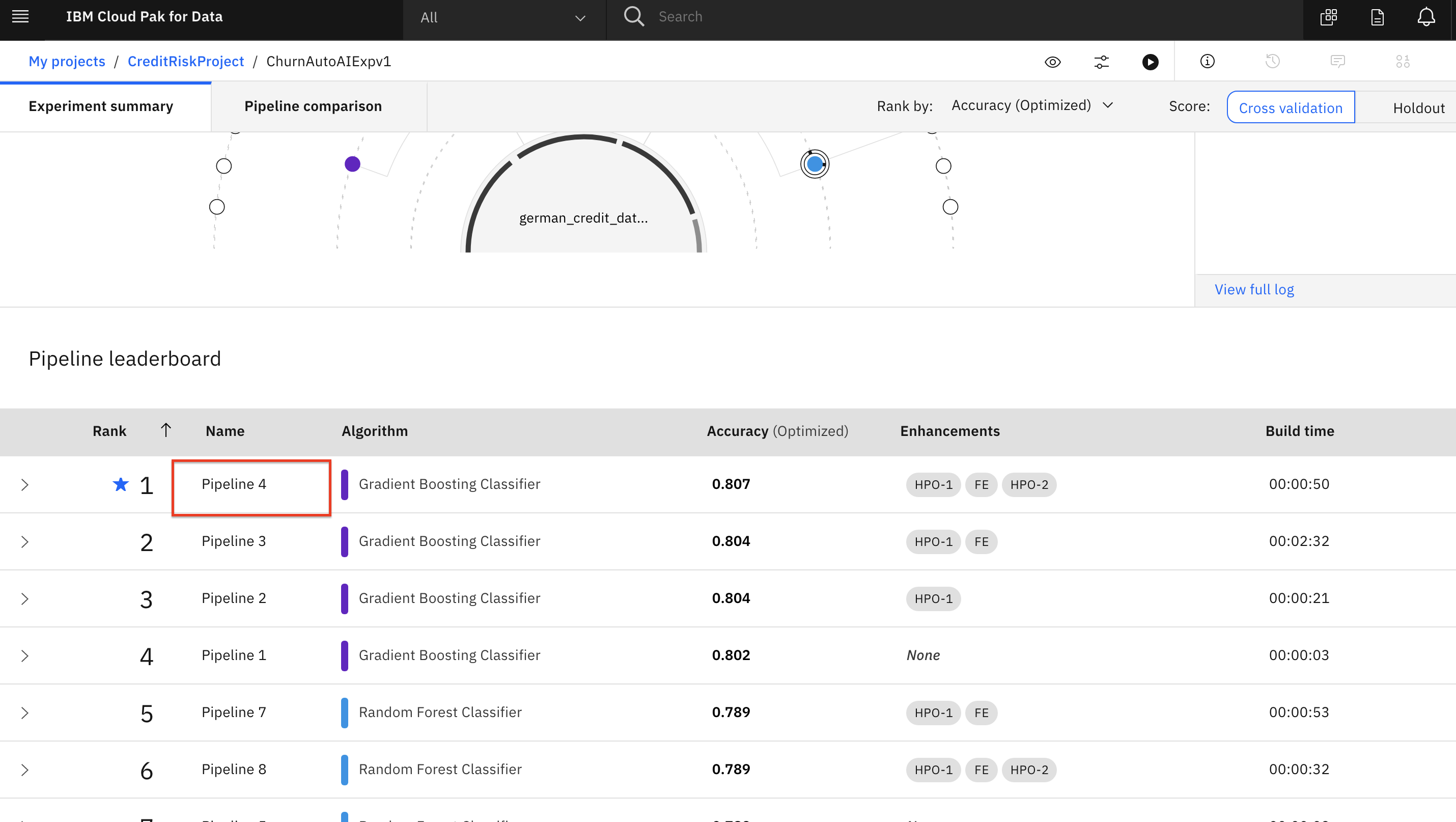
- The model evaluation page will show metrics for the experiment, confusion matrix, feature transformations that were performed (if any), which features contribute to the model, and more details of the pipeline. Optionally, feel free to click through these views of the pipeline details.
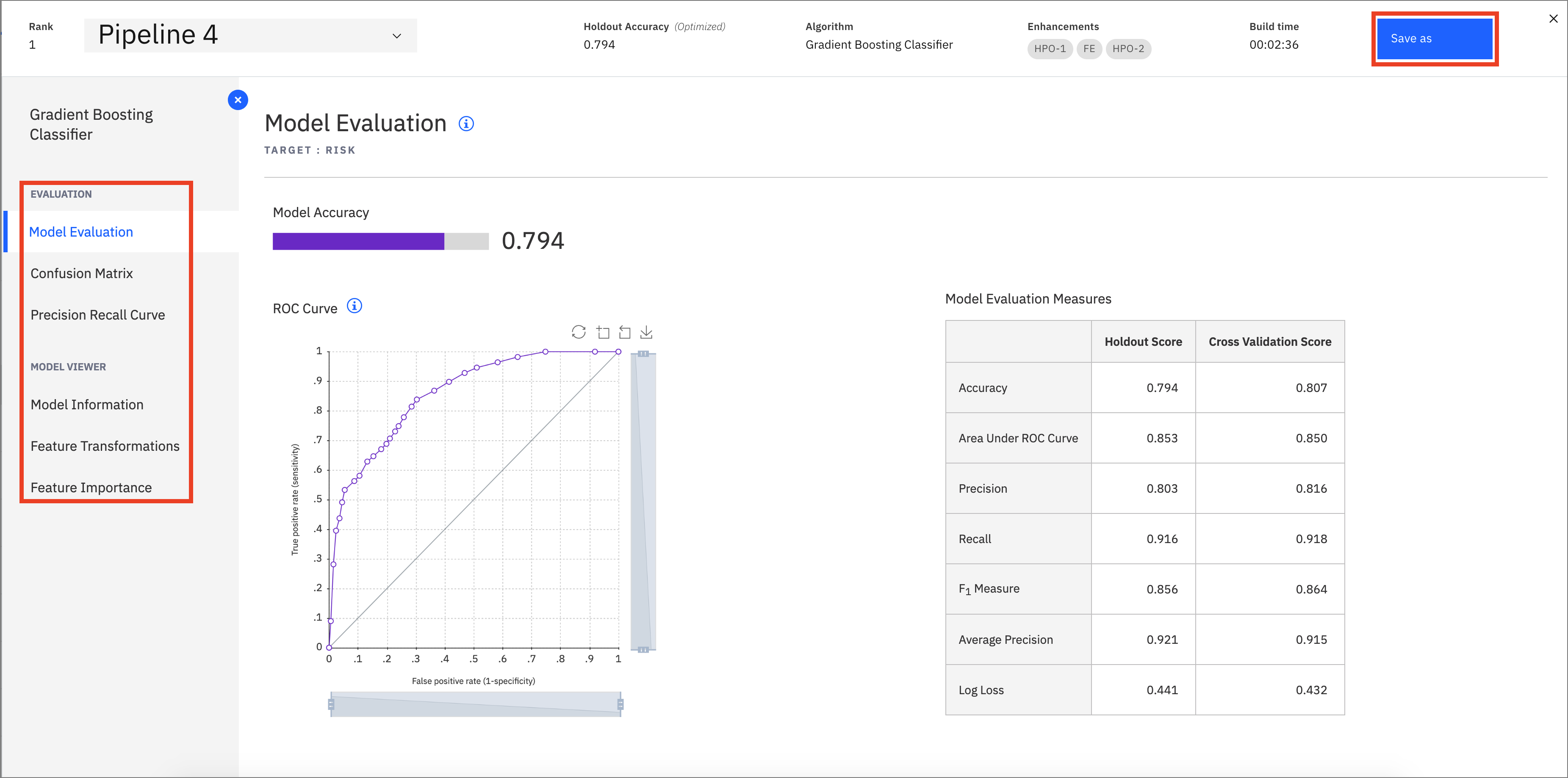
- In order to deploy this model, click on the
Save asbutton. On the next scren, select theModeloption. Keep the default name or change it, add an optional description and tags, and clickCreateto save it.
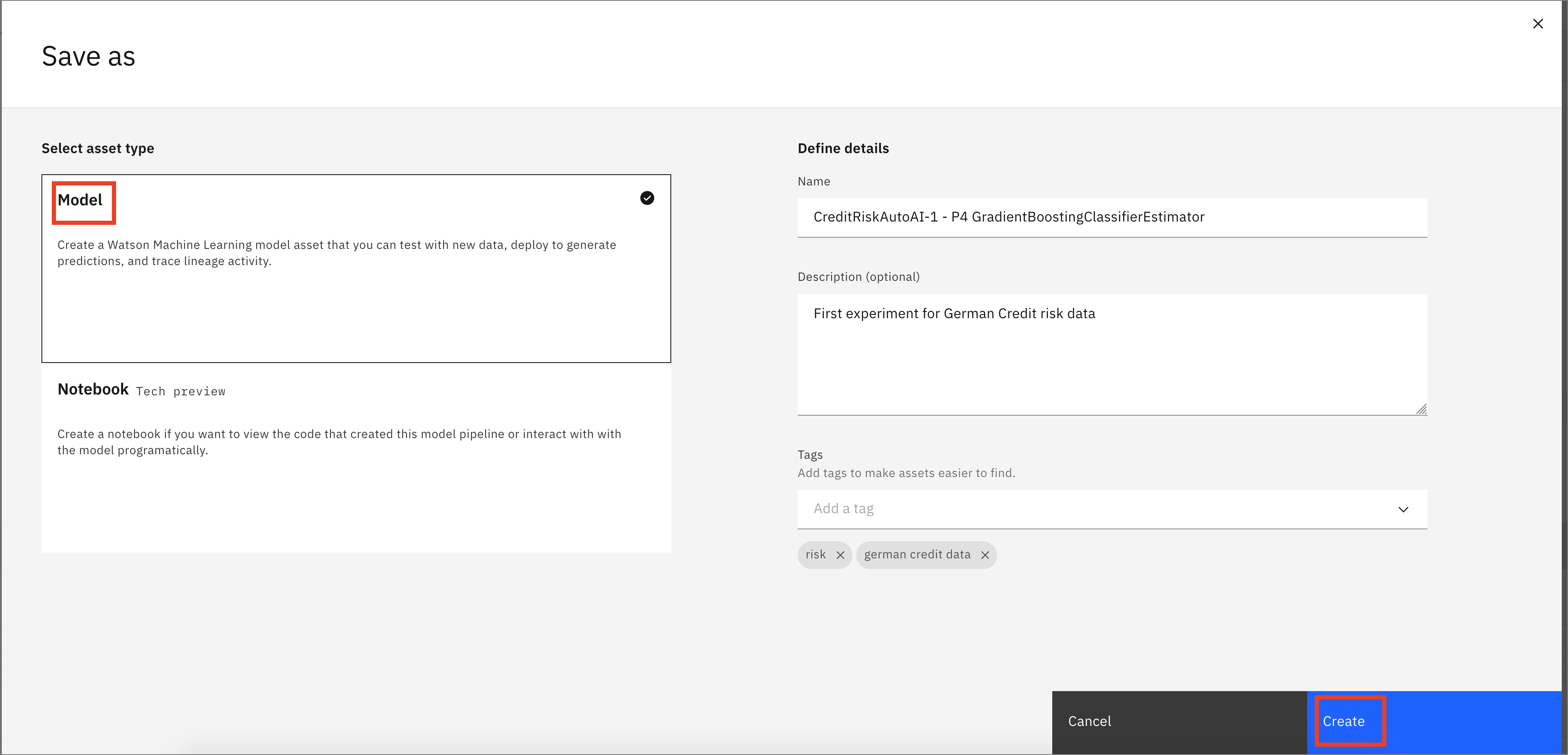
- You receive a notification to indicate that your model is saved to your project. You can return to your project using the notification by clicking
View in project, or go back to your project main page by clicking on the project name on the navigator on the top left.

- You will see the new model under Models section of the Assets page:
3. Save AutoAI notebook¶
- To save the AutoAI experiment as a notebook, go back to the window for the pipeline you have chosen, and click
Save as.

- Choose the
Notebooktile, accept the default name or change it if you like. Add optional description or tags, and clickCreate.

- You will receive a notification to indicate that your notebook is saved to your project. Go back to your project main page by clicking on the
View in projectlink.

- Alternately, closing the window will expose the path back to the project at the top of the screen.

- The notebook will be saved to your project, and can be examined in detail, changed and modified, and used to create a new model. See the documentations for Modifying and running an AutoAI generated notebook for details.
4. Promote the model¶
- Now that we have saved our model, we will next need to make the model available in our deployment space so it can be deployed. Under the Models section of the Assets page, click the name of your saved model.
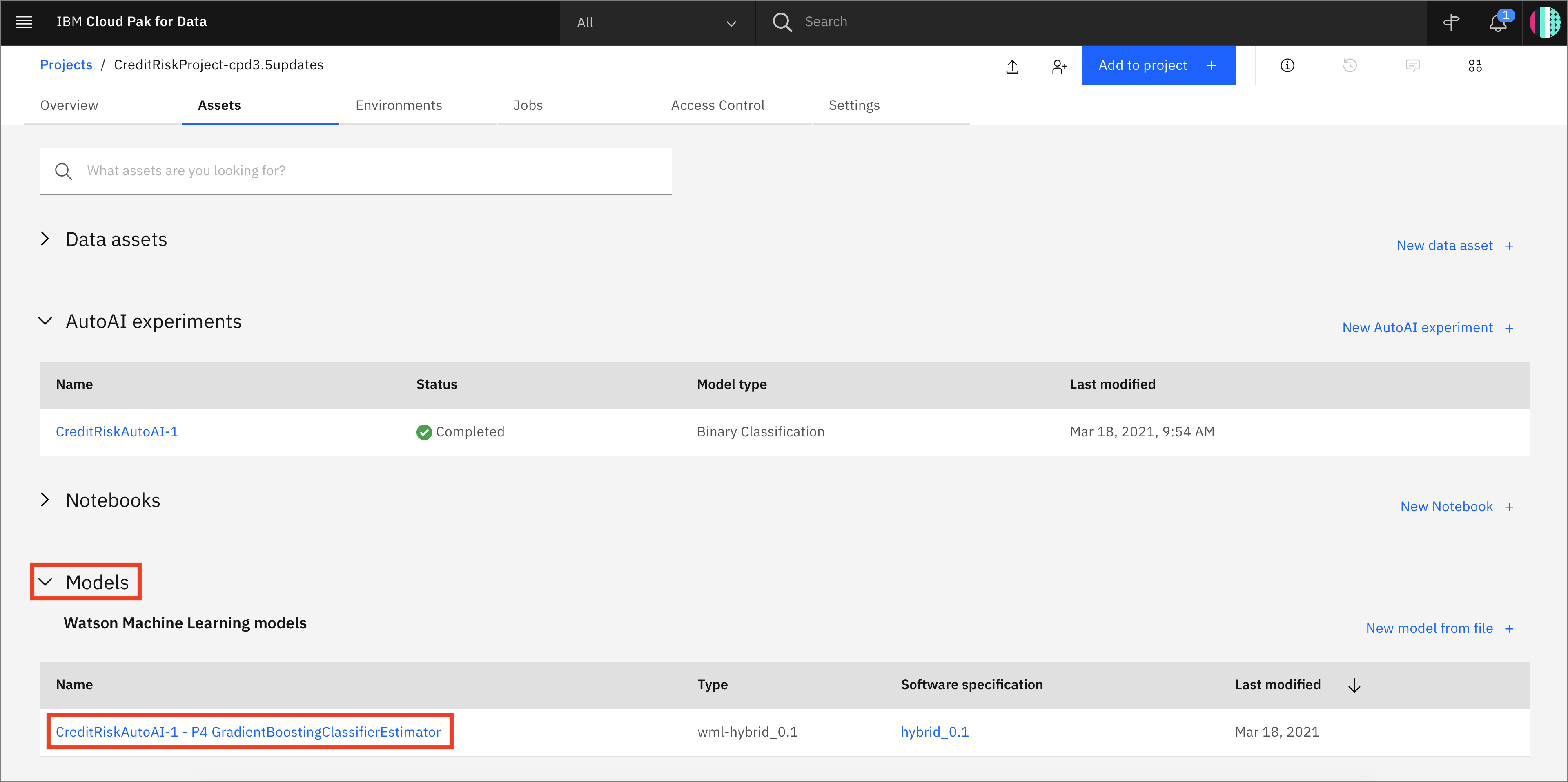
- To make the model available to be deployed, we need to make it available in the deployment space we previously set up. Click on the
Promote to deployment space:

***Note: This is assuming you have already created a deployment space in the pre-work section of the workshop.
- Add an optional description or tags if you'd like. Click on the
Promotebutton.
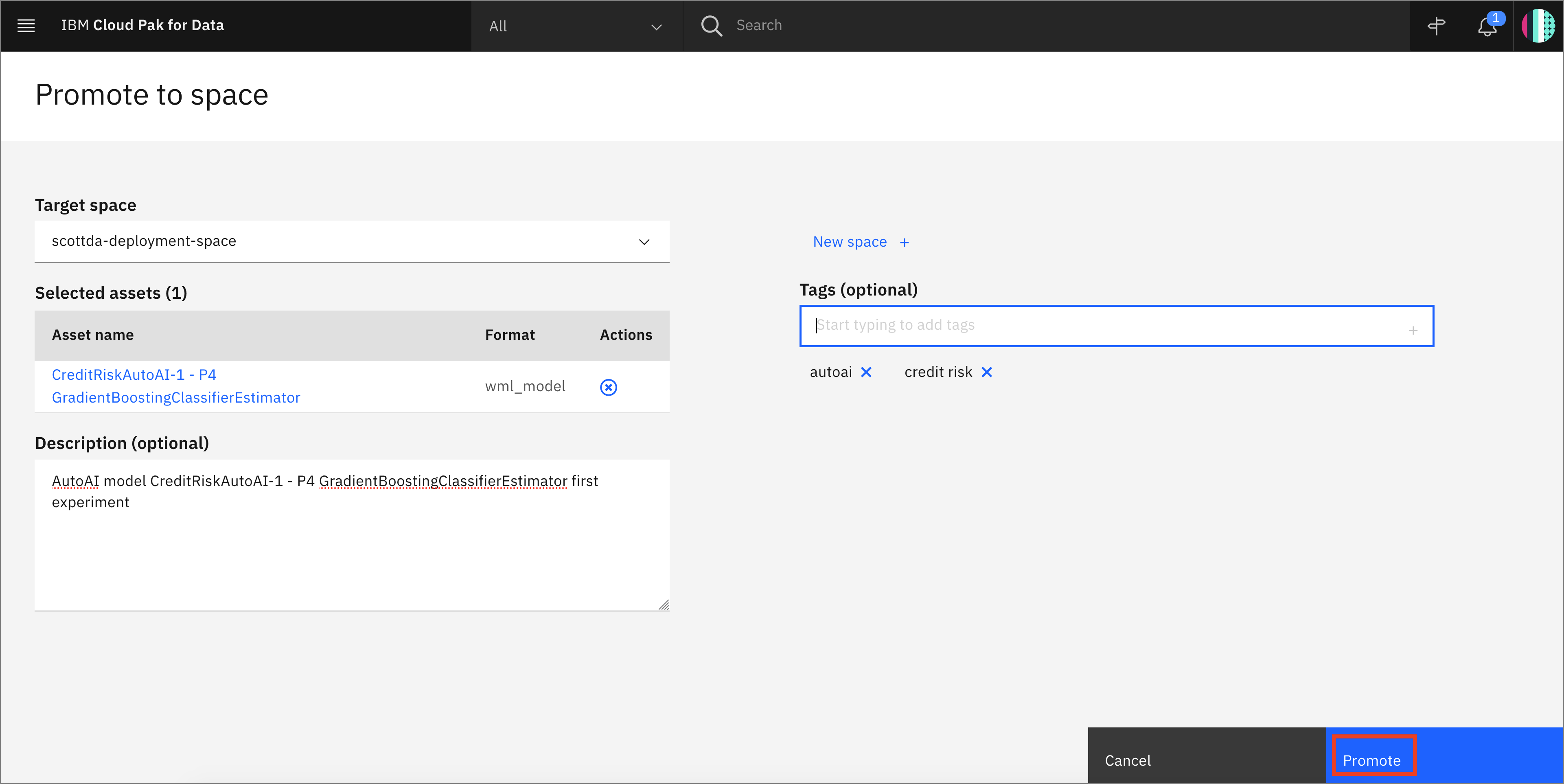
- You will see a notification that the model was promoted to the deployment space succesfully.

Conclusion¶
In this section we covered one approach to building machine learning models on Cloud Pak for Data. We have seen how AutoAI helps find an optimal model by automating tasks such as:
- Data Wrangling
- Model Algorithm Evaluation & Selection
- Feature Engineering
- Hyperparameter Optimization.